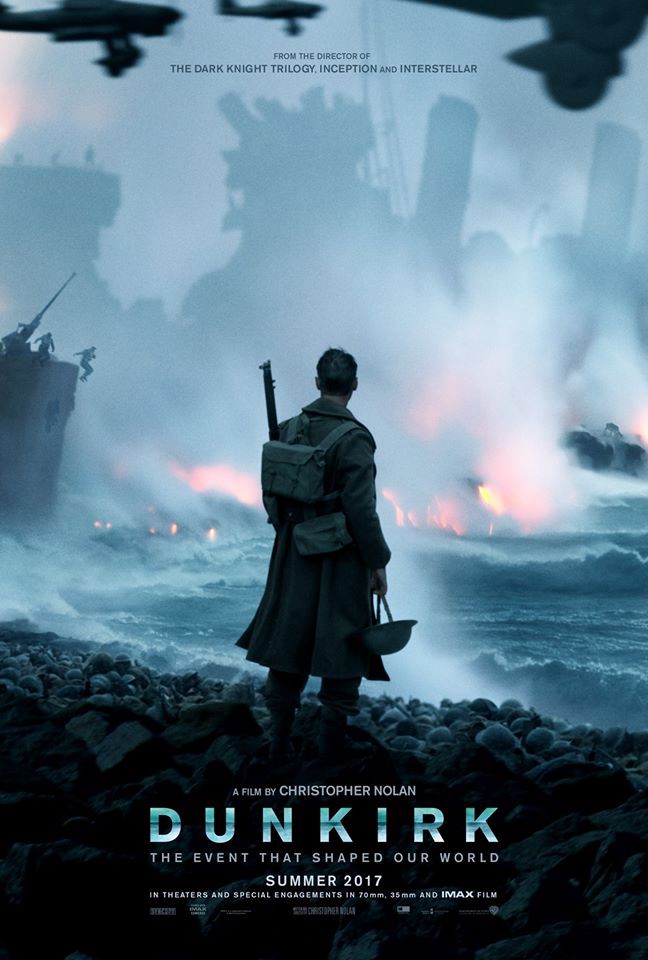Christopher Nolan’s latest film merges realism with war, to mixed results.

Recent war movies such as American Sniper, Lone Survivor and Hacksaw Ridge approach the horror of their topics by humanizing the characters we follow onto the battlefield. In these films, we learn these characters’ backstories and form a bond with them as an audience. That’s what makes the following battle scenes gruesome.
Dunkirk, the latest film from Christopher Nolan, entirely forgoes that formula. The film wants to capture war at its most raw, letting the action speak for itself.
It opens in the heat of battle. We meet Tommy (played by newcomer Fionn Whitehead), who almost immediately becomes the only survivor in his troop as bullets rain down on the streets of Dunkirk in France.
He rarely speaks, forming silent companionships with two fellow soldiers (Aneurin Barnard and One Direction’s Harry Styles). Dialogue is sparse in the film’s first half, instead letting Hans Zimmer’s pulsating score do most of the communicating.
Nolan’s primary focus is the action; emotion is merely a secondary effect of that. Nolan wanted the experience to be raw and entirely immersive. That’s both the beauty and downfall of Dunkirk.
The film follows three different strains of battle: land, sea and air. It was filmed mostly with 65mm IMAX cameras, often using handheld cameras to give the battle a firsthand impression.
Watching the film on Franklin Institute’s four-story-tall, 70-foot-wide, eye-shaped IMAX screen yielded mixed results. The handheld shakiness added a layer of authenticity to the film, but, paired with actors of similar appearance, made its more vicious sequences dizzying to follow.
This creates a cinematic paradox. The film forgoes clarity for chaos, capturing the pandemonium and horror the characters face. By nature, this confusion comes at the cost of viewer immersion.
For instance, one of the film’s more intense sequences involves soldiers trapped in a ship hull under fire, water flooding in through the bullet holes. Zimmer’s music swells and scorches as the threat of drowning emerges, but the viewer gets no sense of the size of the hull. Instead, the camera is glued on super-tight close-ups of the soldiers reacting. This sacrifices essential knowledge needed to understand the scope of what’s at stake.
The three stories each follow their own timeline. While the three main soldiers try to escape Dunkirk’s beaches, a rescue boat captained by a mariner (Mark Rylance) scoops up the sole survivor of an unseen battle (Cillian Murphy). At the mention of Dunkirk, Murphy’s character refuses to go back, and the audience sees the extent war can impact a man.
Up in the sky, Tom Hardy plays a pilot on his way to Dunkirk. Here, Hoyte van Hoytema’s cinematography excels; planes swoop through pastel-colored skies gracefully, intercut by the jagged sounds of engines rending through the air.
The fuel gauge in Hardy’s plane is smashed, leaving him no way of knowing if he’ll reach his destination. The ticking effect in Zimmer’s score comes into play here as a reminder of how little time Hardy — and any character, really — has left.
Zimmer’s score drives the film forward with the force of a crashing wave. With a script of only 70-something pages and a 106-minute runtime, it’s Nolan’s shortest work by a good margin.
Nolan is a director who thrives on complex setups; his film Memento operates on two completely different timelines, and his most recent, Interstellar, explored what it’s like to go through a black hole.
There’s no premise setup required here. The movie is constant cause-and-effect, always forward moving. This level of filmmaking demands respect; it’s the most vicious, unapologetic war film in recent memory. But it’s entirely possible some audiences won’t be able to keep up. ••




